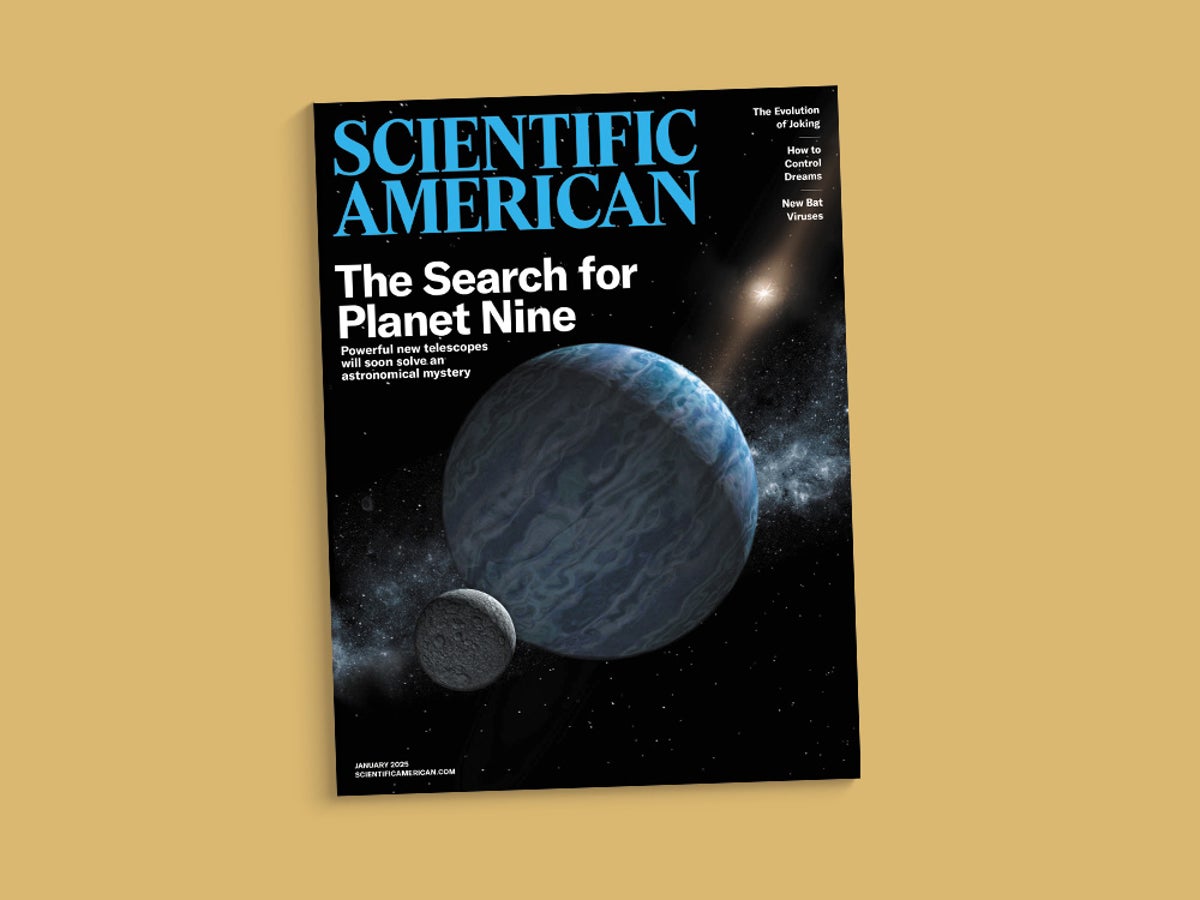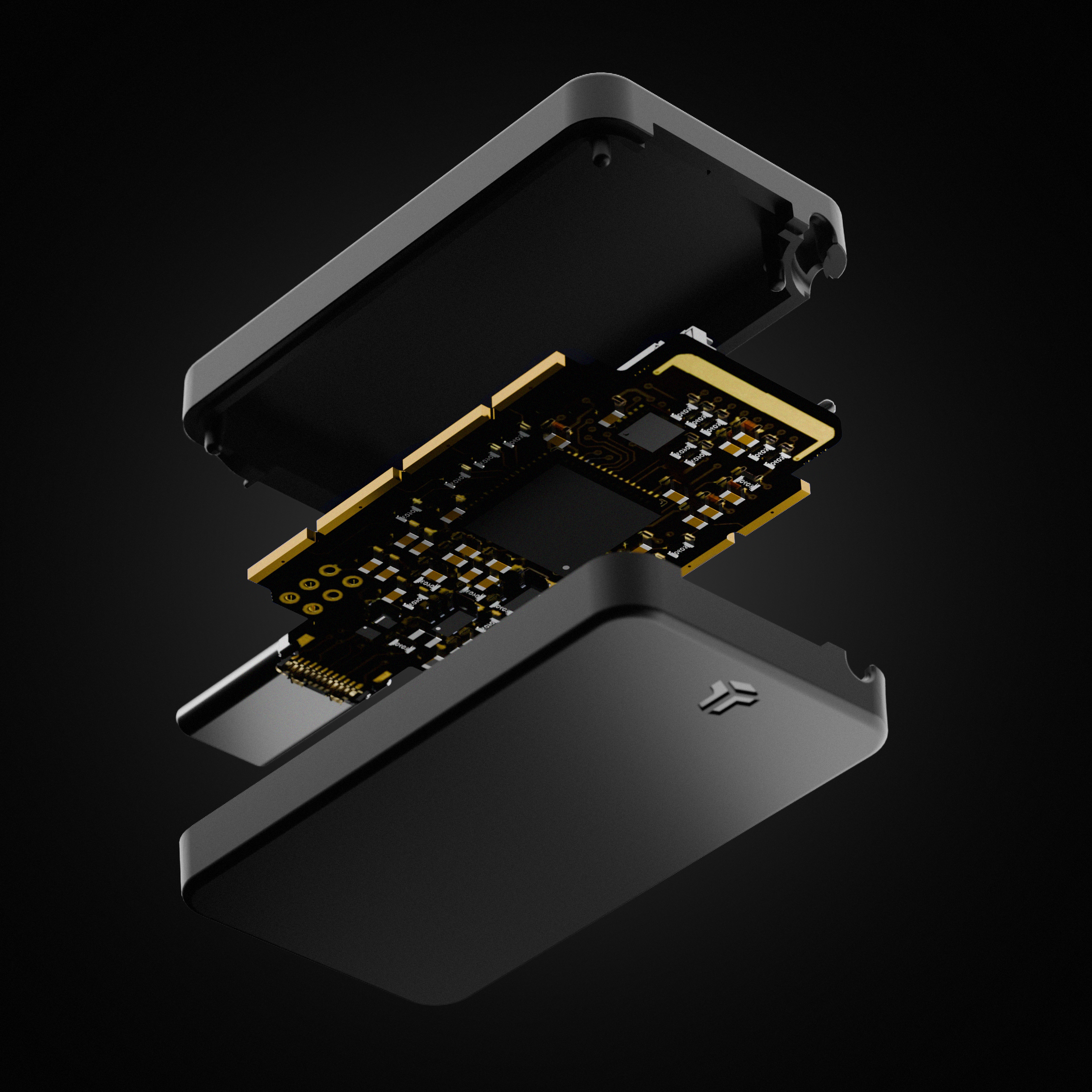Readers Respond to the January 2025 Issue

After I read “The Hunt for Planet Nine,” by Robin George Andrews, it occurred to me that one thing that should be discussed is the possibility of sending a probe out to this hidden planet in our solar system, should the new Vera C. Rubin Observatory confirm its existence.JAMES W. SCOTT VERNON, N.J.On supporting science journalismIf you're enjoying this article, consider supporting our award-winning journalism by subscribing. By purchasing a subscription you are helping to ensure the future of impactful stories about the discoveries and ideas shaping our world today.If new instruments and surveys provide clear evidence that Planet Nine likely exists, but then it continues to evade detection, that would increase speculation that it might be a primordial black hole. Would there be any hope of detecting such a black hole?RON PHILO KANSAS CITY, KANS.What are the chances that Planet Nine is a brown dwarf? That could explain its elusiveness.CAROLINE KIRSCH VIA E-MAILANDREWS REPLIES: To answer Scott: If Planet Nine is discovered, I’m confident a probe would eventually be sent to it! But after launch it might take decades for a spacecraft to reach that destination, so you’d have to be incredibly patient.In response to Philo: A small primordial black hole isn’t impossible, but such objects remain theoretical, and as astronomer Mike Brown noted in my article, it’s far more likely that Planet Nine is just a difficult-to-find planet. It might be one that’s so dim that it doesn’t reflect much light. Regarding Kirsch’s question: I think a brown dwarf is simply too massive to explain the gravitational perturbances detected by astronomers. It’s more likely to be a stealthy, lighter planet.PLACEBO EFFECT AND THE VAGUS NERVE“Untangling the Vagus Nerve,” by Jena Pincott, prompts a question: Does the vagus nerve itself orchestrate the placebo effect?RICHARD BUCHANAN LONDONPINCOTT REPLIES: This inquiry raises an intriguing question. There is certainly a case to be made that the vagus nerve plays a role—directly or indirectly—in the placebo response. The expectation of an effective treatment could conceivably activate vagal pathways that influence various parts of the body, including the heart and gut, which in turn communicate with the brain. Seen this way, the placebo effect is not “all in the head” but instead involves deeper physiological mechanisms than previously understood.With respect to vagus nerve stimulation (VNS) for major depression, however, its effects on successfully treated patients appear to extend beyond placebo. Whereas the placebo responses tend to kick in quickly but are short-lived, VNS has been shown to induce gradual, cumulative improvements that persist over years of treatment. Moreover, neuroimaging studies for both VNS and transcutaneous VNS have shown changes in brain regions that didn’t occur in sham treatments. Future research should deepen our understanding of how the vagus nerve contributes to placebo effects while driving lasting physiological changes. TILING SHAPESIn “Tessellation Revelation” [December 2024], Elise Cutts discusses mathematician Gábor Domokos’s work on tiling “soft cell” shapes in two and three dimensions. Is there research into tiling in dimensions greater than three?BRUCE BAKELY SAN DIEGO, CALIF.The image of a 3D-printed soft cell derived from a hexagonal prism in Cutts’s article bears a resemblance to the curvy lines of an ancient Egyptian artifact called the Sabu disk. Is that purely accidental?REINHOLD SCHLIEPER VIA E-MAILCUTTS REPLIES: Bakely is not alone in pondering four-dimensional soft cells. “We are often getting this question,” Domokos says. But he says his team hasn’t set about answering it—yet. Other projects have the researchers’ attention for now.Regarding the Sabu disk: “This is stunning!” Domokos says. Because there is only a single example of the artifact, it’s hard to say for sure why it has the geometry it does. But Domokos thinks there might be a reason the disk looks like a soft cell. Let’s say you had a closed area with sixfold symmetry (like a regular hexagon) and wanted to turn its 2D curve into a 3D curve. If you tried to preserve as much of the boundary’s symmetry as possible while keeping curvature to a minimum, Domokos says, you would end up with something like the Sabu disk’s perimeter—and the boundary curve of the soft cell based on the hexagonal prism. Although it’s a mystery what motivated the creators of the Sabu disk, “I think we acted under similar constraints and got similar results,” Domokos says. “Beautiful!”HUBBLE TENSION“Cosmic Confusion,” by Marc Kamionkowski and Adam G. Riess [November 2024], explores whether a new form of dark energy can resolve the so-called Hubble tension, the disagreement among estimates of how fast the universe is expanding. Can it be ruled out that dark energy is a force field produced by another nearby universe or even another universe that encloses ours?JIM SULLIVAN VIA E-MAILIs it possible that the universe is spinning? If so, how would it do so? And could that affect the different expansion rates that have been observed, as if we were a slice of pepperoni on a pizza observing the pizza expand around us as it was tossed into the air?CAMPBELL HODGSON VIA E-MAILTHE AUTHORS REPLY: Sullivan’s interesting question would require more work to define and understand before it could be answered. People have indeed floated ideas about models with extra spacetime dimensions. There may be other universes that could be “near” our own in some of these extra spatial dimensions. We’re not familiar with any work to implement these ideas in a solution to the Hubble tension, though.Hodgson brings up an excellent question, but we think the answer is no. In a spinning body, the speed at which something moves is proportional to its distance from the center. As physicists, we would say the universe is so big that even if it were spinning extremely slowly, there would be some distance at which things would be moving faster than the speed of light, which is not allowed. And observations so far support that the universe is uniform in all directions, which would preclude spinning.CLARIFICATION“The Astronaut Club,” by Clara Moskowitz and Zane Wolf [Graphic Science; February], noted that Oliver Daemen became the youngest person in space at age 18 in 2021. He was 18.92 years old at the time and was followed by Anastatia Mayers, who went to space at the younger age of 18.87 years in 2023.ERRATUMIn “Untangling the Vagus Nerve,” by Jena Pincott, the graphic “Anatomy of the Vagus Nerve” incorrectly identified the pons of the brain stem as the medulla of the brain stem.


